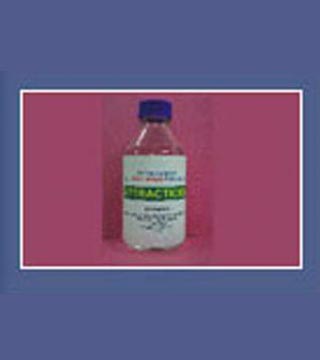
Technology for Dengue Control
Technology Cluster
Mosquitoes are vectors of many arboriviruses that are pathogens of humans and higher animals. About 400 species of mosquitoes can spread disease to human being. These include yellow fever and dengue hemorrhagic fever for which the species, Aedes aegypti and Aedes albopictus are the important vectors. According to the World Health Organisation, at least 700 million people each year are infected with diseases spread by mosquitoes and that approximately one in 17 people currently living will be killed by a mosquito borne disease.
Dengue fever is a serious disease of Asia and Africa. In India also, dengue has become a serious problem both in frequency and mortality. Aedes aegypti mosquito is the most important vector of dengue. Spread of dengue is attributed to the proliferation and adaptation of this mosquito to the various methods used to check it. Currently, there is no vaccine available for dengue. Thus, the solution to control dengue problem is to control this mosquito, which is the weakest link in the transmission cycle.
Use of insecticides to control mosquitoes works for short-term only; mosquito population inevitably increases after a period of few weeks, as they are able to develop resistance. Further, the use of insecticides has been strongly criticised by environmentalists. Bio-control efforts include the use of predatory fish, plankton management, and Bacillus. Cultural methods, such as removal of breeding sites, are sometimes effective depending on the scale of urbanisation.
For the past two decades, pheromones based insect control methods are found to be environment and eco-friendly ways to control mosquitoes. Aedes aegypti mosquito prefers to lay eggs on water containing the larvae of the same species. This larval water is found to be effective for several weeks even after removing the larvae.
Many groups earlier tried to identify this attractant factor present in the larval water but the extremely small amount released by the larvae thwarted its identification. DRDO has reported for the first time in the world this oviposition attractant semiochemicals responsible for the oviposition activity of LCW using Gas Chromatography coupled with Mass Spectrometry (GC/MS) followed by biological evaluation in the laboratory.
DRDO has developed a new technology using this attractant in combination with Insect Growth Regulators (IGR) to form an attracticide having Lure and Kill property. The attracticide can successfully attract the females to lay eggs in water containing attractant. These eggs hatch into larva but do not transform in to adults. Field trials of the technology, in various zones of Delhi, carried out independently by the Municipal Corporation Delhi have confirmed the effectiveness of the attracticide in controlling dengue vector population .
DRDO has also developed a new cost-effective and simple indigenous technology for the preparation of this attractant. The attracticide technology has got tremendous potential for the control of dengue transmitting mosquito, internationally also.
Salient Features
- An efficient method for the control of dengue transmitting mosquito
- Technology is validated by Municipal Corporation of Delhi
- Indigenous method for the preparation of the attractant is already available
- Technology is environment and eco-friendly
- Simple and cost-effective technology
Technology has been patented in India. Patent in USA, UK, Japan and many other countries under PCT has been applied for. Technology transfer to a US-based firm is under progress.


